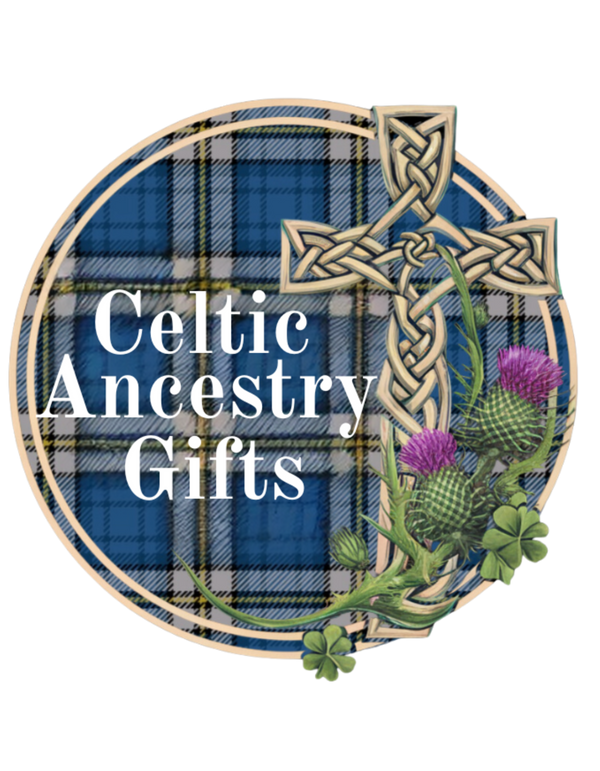
An In-Depth Exploration of Clan Cameron History: From Highland Origins to Global Legacy
Share
An In-Depth Exploration of Clan Cameron History: From Highland Origins to Global Legacy
The saga of Clan Cameron is a captivating narrative spanning centuries, woven with threads of bravery, resilience, and unwavering loyalty. From their roots in the rugged, breathtaking Scottish Highlands to their widespread presence across the globe today, the Camerons have left an undeniable mark on history. This comprehensive exploration delves into the clan's rich and complex past, examining its origins, pivotal figures, key conflicts, lasting contributions to Scottish and global heritage, and the resources available for those seeking to connect with their Cameron ancestry. We will also explore the evolution of the clan's crest, tartans, and associated symbols, offering a deeper understanding of the clan's visual identity and its enduring cultural significance.
Tracing the Origins: Unraveling the Cameron Ancestry - A Multifaceted Investigation
The precise origins of Clan Cameron remain a subject of ongoing scholarly debate, with several compelling, yet often conflicting, theories vying for prominence. One prominent lineage traces the clan back to the powerful Clan Gregor, suggesting a common ancestor and shared historical experiences. This theory points to a possible descent from Gregor MacGregor, a figure shrouded in legend and controversy, whose descendants played significant roles in the turbulent political landscape of the Scottish Highlands. The close proximity of their territories, and the overlapping alliances and conflicts between the two clans, lend credence to this interpretation. Supporting evidence may be found in shared clan traditions, similar battle tactics, and even familial names that appear in records from both clans. However, further research and analysis are still needed to definitively confirm this connection.
Other theories propose alternative origins for Clan Cameron, suggesting links to other influential Highland families and highlighting the complex web of familial relations that existed within the Highlands during this formative period. These alternate theories, while less extensively documented, deserve consideration as they provide an additional layer to the complex puzzle of the clan's origins. The study of early Gaelic records, place names, and land ownership patterns contributes greatly to this investigation. The lack of extensive written documentation during this period presents a challenge; therefore, careful examination of the available evidence is essential to form a comprehensive understanding.
By the 14th century, however, the Camerons had firmly established themselves as a significant force in the Lochaber region, a strategically important area in the Scottish Highlands. Their control over this territory provided access to vital resources, including fertile land and crucial trade routes, solidifying their power and influence within the region. This period of consolidation marked a crucial turning point in the clan's history, laying the foundation for their future growth and prominence.
Key Figures: Shaping the Destiny of Clan Cameron - Beyond the Chiefs
Throughout its history, Clan Cameron has been profoundly shaped by the actions and leadership of its key figures. Sir Ewen Cameron of Lochiel, often hailed as the founder of the clan, stands out as a pivotal leader who consolidated the clan's power and established its enduring legacy. His strategic acumen and military prowess were instrumental in expanding the clan's territory and influence, securing its position among the most powerful clans in the Highlands. However, his leadership was not solely defined by military strength; he also demonstrated significant skill in diplomacy and negotiation, forming vital alliances and minimizing conflicts.
But the narrative of Clan Cameron must not solely focus on male figures. Numerous women played critical, yet often unacknowledged, roles in shaping the clan's destiny. These women managed estates during periods of conflict, providing essential support to clan warriors and ensuring the continuation of the Cameron lineage through generations. Their contributions often went undocumented, yet their influence was significant in maintaining the clan's stability and resilience during times of great upheaval. Further research into the roles of women within the clan is crucial to creating a more complete understanding of their history.
Other significant figures throughout Clan Cameron's history include various chiefs and prominent warriors who led the clan through periods of both prosperity and adversity. Their contributions to the clan's military successes, diplomatic achievements, and overall survival are integral to understanding the clan's journey through history. The stories of these individuals, both men and women, offer a more complete picture of the clan's evolution and its place within the broader context of Scottish history. These narratives often intertwine with local legends, myths, and folklore, adding an additional layer of richness and complexity to the clan's history.
A Clan Forged in Conflict: The Camerons and Major Historical Events - Loyalty and Resilience
Clan Cameron's history is inextricably linked to significant historical events that shaped the destiny of Scotland and its people. Their involvement in the Jacobite risings of the 17th and 18th centuries is a particularly crucial aspect of their story, demonstrating the clan's unwavering loyalty to the Jacobite cause and their willingness to fight for what they believed in, even in the face of overwhelming odds. The clan's participation in these uprisings underscores their commitment to their beliefs and their willingness to fight for what they believed in, even in the face of overwhelming odds.
The Battles of Killiecrankie and Culloden, pivotal moments in Jacobite history, saw significant Cameron participation. These battles highlight the clan's military prowess and their strategic importance within the Jacobite army. The accounts of these engagements reveal both the successes and the devastating losses suffered by the clan, illustrating the human cost of conflict and the enduring loyalty of the clan members to their cause. The consequences of these conflicts deeply affected Clan Cameron and had long-lasting effects, as it did for many Highland clans.
The aftermath of the Jacobite rebellions had far-reaching consequences for Clan Cameron, as it did for many Highland clans. The subsequent acts of suppression, including the disarming of clans, the systematic clearing of lands, and the forced assimilation into the prevailing culture, led to profound social and economic upheaval. These events forced the clan to adapt and find new ways to survive and maintain their identity in the face of significant adversity. The clan's resilience in overcoming these challenges is a testament to their enduring spirit and unwavering commitment to their heritage. The stories of survival, perseverance, and adaptation are central to understanding the enduring legacy of Clan Cameron.
Clan Cameron in the Modern Era: Preserving Heritage and Connecting with Ancestry - A Global Community
Despite the challenges faced throughout its history, Clan Cameron remains a vibrant and active community. Cameron descendants are scattered across the globe, connected by a shared sense of heritage and a collective pride in their ancestry. Numerous organizations and societies have been established to maintain and celebrate the clan's rich history, providing a platform for members to connect with each other and learn more about their heritage. These groups play a vital role in preserving the cultural traditions, promoting genealogical research, and fostering a strong sense of community among Cameron descendants worldwide.
These organizations often host gatherings, reunions, and events that bring together Cameron descendants from around the world. These events offer opportunities for individuals to connect with their heritage, learn about their family history, and forge new relationships with others who share a common ancestry. The preservation of clan traditions, such as specific musical styles, dances, and storytelling techniques, are a crucial aspect of these efforts, ensuring the continuation of the clan's unique cultural identity.
For those interested in exploring their Cameron ancestry, a wealth of resources is available. Genealogical websites, historical archives, and clan societies offer invaluable tools and support for individuals seeking to trace their family history. Websites like celticancestrygfts.com provide crucial resources for those embarking on the journey of uncovering their family's past, facilitating connections with distant relatives and offering a deeper understanding of the Cameron legacy. The process of uncovering one's family history can be a deeply rewarding experience, offering a sense of belonging and connection to a rich and vibrant heritage.
The Visual Identity of Clan Cameron: Crest, Tartans, and Symbols - A Rich Tapestry of Heritage
The visual identity of Clan Cameron, embodied in its crest, tartans, and associated symbols, plays a significant role in representing the clan's heritage and fostering a sense of shared identity among its members. The clan crest, a powerful visual representation of the clan's history and lineage, often features symbolic elements that convey its values, strength, and connection to the land. The intricate design, passed down through generations, holds both aesthetic and historical significance. The specific design elements and their interpretations vary among different branches of the clan, reflecting the diversity of experiences and traditions within the clan's broader community.
Clan Cameron tartans are another important element of the clan's visual identity. The vibrant colours and patterns, woven into cloth, represent a connection to the land and the clan's heritage. Different tartans may be associated with specific branches of the clan or historical periods, further demonstrating the clan's rich and complex history. Wearing the tartan represents pride in one's heritage and serves as a visual reminder of the clan's enduring legacy. The specific colours and patterns often hold symbolic meanings, reflecting the clan's history, beliefs, and values.
Beyond the crest and tartans, other symbols and motifs have been associated with Clan Cameron over time. These symbols, often found in clan badges, heraldry, and traditional artwork, further contribute to the rich tapestry of the clan's visual identity. These symbols often carry symbolic meanings, representing elements of the clan's history, beliefs, and values. The study of these symbols provides additional insight into the clan's cultural heritage and its enduring legacy.
Conclusion: A Legacy of Resilience and Enduring Spirit - A Continuing Narrative
The history of Clan Cameron is a testament to the enduring spirit of a clan that has faced numerous challenges and emerged stronger. From their origins in the Scottish Highlands to their global presence today, the Camerons' story is one of resilience, loyalty, and unwavering commitment to their heritage. Understanding their history provides valuable insights into the broader context of Scottish history and offers a compelling example of a clan that has adapted, endured, and maintained its unique identity throughout the passage of time. By embracing their history and connecting with their ancestry, Cameron descendants can carry on the legacy of this remarkable clan for generations to come. The ongoing research, preservation efforts, and global community of Cameron descendants ensure that the narrative of Clan Cameron continues to be told and celebrated for many years to come.

